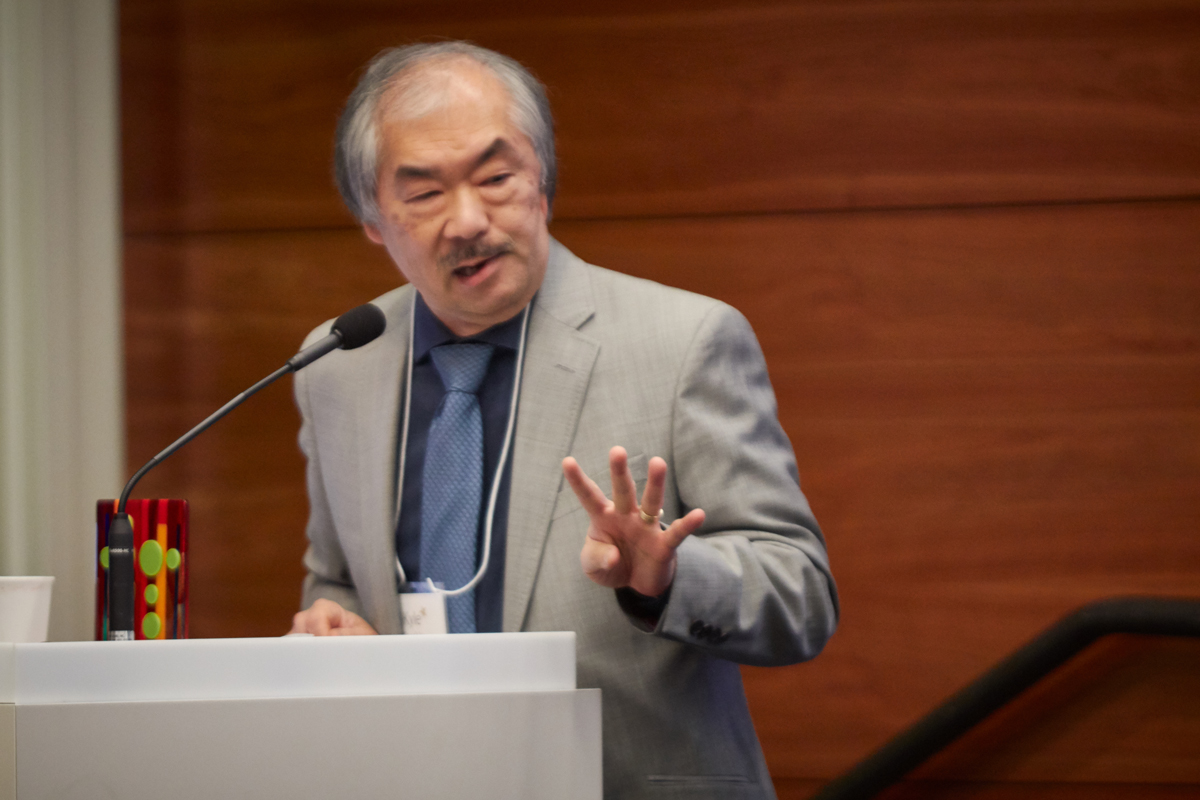Dr. Kyle Kinoshita of Seattle Public Schools Accepts Valerie Logan Leadership in Science Education Award
 isbscience.org/news/2018/11/09/dr-kyle-kinoshita-of-seattle-public-schools-accepts-valerie-logan-leadership-in-science-education-award/
isbscience.org/news/2018/11/09/dr-kyle-kinoshita-of-seattle-public-schools-accepts-valerie-logan-leadership-in-science-education-award/
Photo: Dr. Kyle Kinoshita, chief of curriculum, instruction and assessment for Seattle Public Schools, speaks after receiving the Valerie Logan Leadership in Science Education Award on Thursday, November 8, 2018. (Photo courtesy James Cheng)
Dr. Kyle Kinoshita was honored Thursday with the Valerie Logan Leadership in Science Education Award at ISB’s seventh annual Valerie Logan Luncheon.
This award is presented to community leaders who are committed to an educational practice grounded in research, who build networks among teachers, principals and STEM professionals, and who share ISB’s bold vision that all children and young people should have the opportunity to learn science as a gateway for their future.
“Like Valerie Logan, Kyle is a systems thinker and determined optimist for enacting the bold vision for all students,” said Caroline Kiehle, director of the Logan Center for Education. “Across the region, Kyle’s leadership has influenced hundreds of teachers to elevate STEM education for their thousands of historically underserved students.”
Kinoshita’s relationship with ISB goes back several years. It started when he was the executive director of learning and teaching for more than 10,000 students in the Marysville School District, and continues today as he serves as chief of curriculum, instruction and assessment for Seattle Public Schools.
“If you want to elevate science for students, you must first elevate teachers to their true calling as professionals,” Kinoshita said upon accepting the award.
Kinoshita sat down with ISB to talk about the significance of the Valerie Logan Leadership in Science Education Award, improvements in STEM education he’s seen over his career, obstacles in the field, and more.
ISB: You were honored with the Valerie Logan Leadership in Science Education Award for your pioneering vision and ongoing commitment and support to STEM education in K-12. What does this award mean to you?
KYLE KINOSHITA: It’s incredibly validating. For the last 18 or so years, because our system of accountability mainly valued literacy and math, science and STEM were sometimes throw-away subjects. This was especially true if you were a school with a large number of people of color or students in poverty. If a school had high literacy and math test scores, the kids might get time and resources for a strong and rich STEM education. Often these were the kids who were going to succeed anyway. But low-income schools, because of high-stakes accountability, were often shortchanged when it came to STEM opportunities. This reality was such an inequity to me. My vision was to ensure that ALL kids get deeply engaged in STEM, so that they could get access to the life opportunities available when you did. This was my motivation in improving STEM education for Marysville students, who were in one of the poorest districts in Snohomish County. It’s my motivation for working in Seattle, where opportunity equity is a huge issue. I would like to think that this award acknowledges my efforts and those of my colleagues.
ISB: You have been working with ISB for six years, both at Marysville School District and now at Seattle Public Schools. How has your relationship with ISB translated into better STEM education for students and teachers?
KK: Without better STEM education for teachers of STEM, we can’t expect better STEM education for students. And without the ability to visualize what we’re preparing our students for, it’s really difficult for STEM teachers to shape the learning experiences that will build student capacities for a future in STEM. It’s difficult to see what it looks like when students have learned these important capacities. One of the most important benefits of working with ISB Education is that they help connect educators with that kind of visioning. Providing teachers the rare opportunity to work with higher education faculty, college departments, and industry partners offers experiences that guide them in working with students — that’s what working with ISB provides. And just knowing what ISB is and how it contributes to the scientific community and to the betterment of human health and welfare has been helpful in advocating for the development of STEM education.
ISB: What are the biggest improvements/advancements you’ve witnessed in STEM education?
KK: More than anything, we’ve broken free from the idea that learning in each of the STEM areas is about coverage and memorization of shallow content with no opportunity to authentically apply knowledge. Instead, with STEM you see a very integrated, rich, engaging set of student experiences that align to future opportunities in fields like health care, technology, research, manufacturing and transportation. The irony is that by moving away from memorization, STEM education means that students learn and remember much more deep content knowledge that will prepare them for the future.
ISB: What are the obstacles you see facing administrators, educators and/or students in terms of STEM education? What are some approaches being taken to overcome these obstacles?
KK: More than anything, the continual difficulty in providing our educational system with ample resources produces a variety of obstacles. To help teachers grow into the ability to provide rich student experiences, they need time to learn and plan. They also need solid instructional materials and technology for students to engage with. School and district leaders need to better understand how to facilitate teacher learning and to build more creative ways for students to engage, such as revamping schedules to create longer blocks of learning time. All of this needs to be underwritten by a predictable resource base. But this does not exist currently in Washington state—school funding has not been fixed.
ISB: What advice would you offer young educators looking to get involved with STEM education?
KK: Always be a learner, no matter where you are in your career. The reality that things change so fast means it’s never a dull moment.
Learn more about ISB’s education programs here.
To see a collection of photos from the seventh annual Valerie Logan Luncheon, go here.






